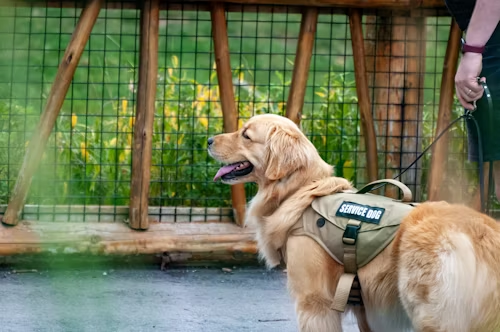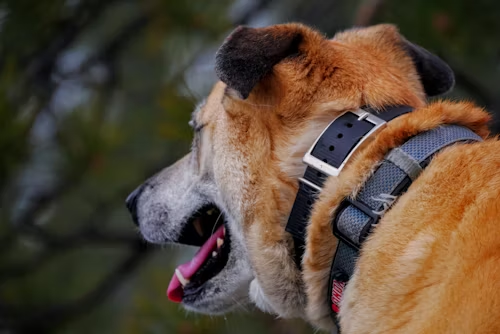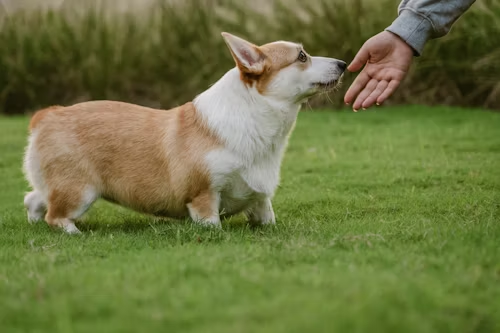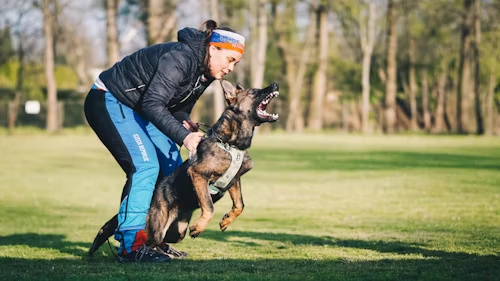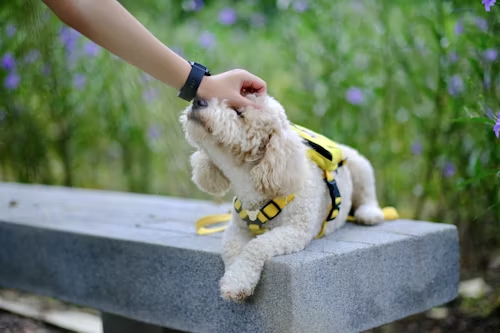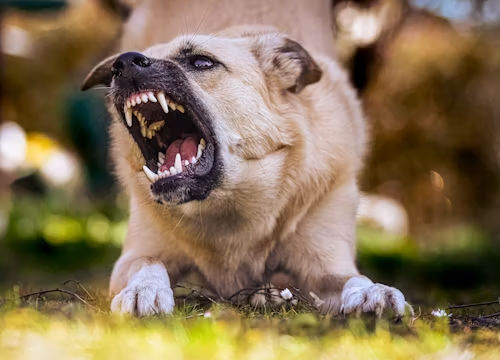Owning a dog is one of life’s greatest joys. They’re loyal, loving, and full of energy. But sometimes, that same energy can turn into misbehavior; chewing shoes, barking too much, jumping on guests, or ignoring commands.
If you’ve ever wondered, “How can I train my dog to behave better?”, you’re in the right place. This guide will walk you through science-backed methods to teach your dog good manners, even if you’re not an expert trainer.
Why Dog Training Matters
Training your dog isn’t just about teaching tricks. It’s about building communication and trust between you and your pet. When your dog knows what you expect, life becomes easier for both of you. A well-behaved dog is:
- Safer, because they listen to commands like “stop” or “come.”
- Calmer around people and other pets.
- Happier, because structure reduces stress and confusion.
Step 1: Understand How Dogs Learn
Before teaching commands, it helps to understand how dogs think. Dogs don’t understand language the way humans do, but they’re great at associating actions with outcomes.
Here’s the golden rule: Dogs repeat behaviors that get them what they want.
If your dog jumps on you and you pet them, they’ll learn that jumping equals attention. If they sit quietly and get a treat, they’ll learn that calmness brings rewards.
This is called positive reinforcement, and it’s the foundation of all modern dog training.
Step 2: Use Positive Reinforcement
Forget the old-school “alpha” or punishment-based methods. Science has shown that reward-based training is far more effective and humane.
What You’ll Need
- Small treats your dog loves (cut them into tiny pieces)
- A clicker (optional but helpful)
- A calm, distraction-free space
How to Do It
- Reward the behavior you want: When your dog does something good; sitting, staying calm, or coming when called; immediately reward them with a treat and praise. Example: “Good sit!” then give a treat.
- Ignore or redirect bad behavior: Don’t yell or hit. Simply stop giving attention and guide your dog toward the right behavior. Example: If your dog jumps, turn your back until they calm down. Then reward calmness.
- Be consistent: Everyone in your home should follow the same rules. If one person allows jumping and another doesn’t, your dog will get confused.
Step 3: Teach the Basic Commands
Basic obedience is the foundation of good behavior. Start with these five essential commands.
Sit
- Hold a treat near your dog’s nose.
- Move your hand up, allowing their head to follow and their bottom to lower.
- As soon as they sit, say “Sit!” and give the treat.
Stay
- Ask your dog to “sit.”
- Open your palm in front of their face and say “Stay.”
- Take one step back. If they stay, reward them.
- Gradually increase distance and time.
Come
- Use a cheerful tone and say “Come!” while gently pulling on the leash.
- When your dog comes to you, reward them with treats and praise.
- This command can save their life in emergencies.
Leave It
- Hold a treat in both hands.
- Show one closed fist and say “Leave it.”
- Wait until they stop trying to get it. Then, give the treat from your other hand.
- This teaches self-control and prevents them from grabbing harmful items.
Down
- Hold a treat in your hand.
- Move it slowly from their nose to the ground.
- When they lie down, say “Down,” and reward them.
Practice each command for 5–10 minutes a day. Short, fun sessions work best.
Step 4: Train for Everyday Manners
Beyond basic obedience, real-life manners make daily life easier.
Walking Nicely on a Leash
Pulling on the leash is a common frustration. This teaches that pulling gets them nowhere, but calm walking moves the fun forward. To fix it:
- Stop walking when your dog pulls.
- Only move forward when the leash is loose.
- Reward them for walking beside you.
Greeting Guests Politely
If your dog jumps on guests:
- Tell friends to ignore them until all four paws are on the ground.
- Reward your dog for calm behavior.
- Practice regularly until greeting politely becomes a habit.
Potty Training
- Take your dog outside after meals, naps, and playtime.
- Praise them every time they go in the right spot.
- Keep a consistent schedule to avoid accidents.
Stop Excessive Barking
Dogs bark to communicate. To manage it:
- Identify the cause (boredom, alerting, anxiety).
- Redirect their focus with commands like “quiet” or a toy.
- Reward silence.
Step 5: Socialize Your Dog Early
Socialization means teaching your dog to feel comfortable around new people, animals, sounds, and environments.
It helps prevent fear and aggression later in life.
How to Socialize
- Expose them gently to different environments such as parks, sidewalks, and vet clinics.
- Let them meet friendly dogs and people.
- Reward calm behavior during new experiences.
Step 6: Manage the Environment
Training doesn’t happen in isolation. Managing your dog’s surroundings helps set them up for success. Examples:
- Keep shoes and valuables out of reach.
- Provide chew toys to satisfy natural urges.
- Set up baby gates to limit access until they learn boundaries.
Step 7: Be Patient and Consistent
Every dog learns at a different pace. Some pick up commands in days; others take weeks or months. The key is patience and repetition. If you get frustrated, take a break. Training should be fun and positive for both of you.
Step 8: Address Problem Behaviors Safely
Sometimes, dogs develop habits that need extra help, like:
- Aggression
- Separation anxiety
- Resource guarding
In these cases, consult a certified dog trainer or behaviorist. Never use harsh punishment; it often makes the problem worse. Professionals can identify the root cause and guide you safely.
Step 9: Make Training a Daily Habit
Training isn’t a one-time project. It’s a lifelong process of communication.
Here are simple ways to include it in daily life:
- Ask your dog to “sit” before meals or walks.
- Practice “stay” when answering the door.
- Use “come” during playtime.
Step 10: Strengthen Your Bond
At its heart, training is about connection. Spend quality time playing, walking, and simply being together. Dogs are emotional beings, they learn best when they feel loved, secure, and understood.
A dog that trusts you will want to behave for you.
Common Mistakes to Avoid
Even well-meaning owners make mistakes. Avoid these common pitfalls:
- Inconsistency: Changing commands or rules confuses your dog.
- Punishment: It causes fear, not learning.
- Too long sessions: Dogs learn best in short bursts.
- Lack of exercise: A bored dog will misbehave. Ensure daily play and walks.
Key Takeaways
- Reward what you want; ignore or redirect what you don’t.
- Train in short, positive sessions.
- Be patient — behavior change takes time.
- Socialize your dog to new environments.
- Maintain a loving, consistent relationship.
When to Seek Professional Help
If you’re struggling with serious behavioral issues, it’s okay to get help. Look for:
- Certified Professional Dog Trainers (CPDT-KA)
- Veterinary behaviorists
- Local obedience schools

